









Defence Minister Rajnath Singh after inaugurating ‘Col Chewang Rinchen’ bridge connecting Durbuk and Daulat Beg Oldie in Eastern Ladakh. PTI
Leh-Ladakh, October 21
The government on Monday announced that Siachen area, the world’s highest battlefield, is now open to tourists.
Defence Minister Rajnath Singh said the government has decided to open the entire area from Siachen base camp to Kumar Post for tourism purposes.
The step has been taken to boost tourism in Ladakh and give people a window to appreciate the tough work done by Army jawans and engineers in extreme weather and inhospitable terrains, he said.
Singh was addressing a function in eastern Ladakh to inaugurate Col Chewang Rinchin Bridge on Shyok River, located about 45 km from the county’s border with China.
“The Ladakh MP in his address, mentioned about opening this area to tourism. And, I am happy to share that the government has decided to open a route from Siachen Base Camp to Kumar Post for tourists,” the minister said.
“This step will make them appreciate the efforts put in by jawans, engineers and other workers,” he said.
Singh later tweeted, “The Siachen area is now open for tourists and tourism. From Siachen Base to Kumar Post, the entire area has been opened for tourism purposes.”
The Siachen Glacier, at a height of around 20,000 ft in the Karakoram Range, is known as the highest militarised zone in the world where the soldiers have to battle frostbite and high winds.
Avalanches and landslides are common at the glacier during the winters and temperatures can drop to as low as minus 60 degrees Celsius
At the bridge inauguration, Singh said only steel and concrete have not gone into its making, but “sweat and valour” of the engineers and workers of the Border Roads Organisation (BRO) too.
They have toiled hard and people should know their stories, Singh said.
The 1400-ft long bridge is the highest altitude permanent bridge that will connect Durbuk and Daulat Beg Oldi and reduce travel time by about half.
The Indian Army had moved a proposal for opening up Siachen to tourists with a focus to showcase the working conditions of troops serving in the sector, and the government gave its nod, according to sources.
According to official figures, the Army lost 163 personnel at the world’s highest battlefield during the last 10 years.
India and Pakistan started deploying troops at the strategically key glacier in 1984 and mountaineering expeditions were allowed till then.
The glacier came under the strategic control of India in 1984 following ‘Operation Meghdoot’.
Former northern command chief Lt Gen (retd) BS Jaswal, however, feels that environmental issues will be a matter of concern.
“Tourism and other activities will see a surge in waste dumping. This will hasten glacier retreat. Due to the presence of the Army, a lot of non-biodegradable waste is already present there and every day, about 1,000 kg is being added,” Lt Gen Jaswal said.
He said that while opportunities will open up the doors for revenue generation for locals as also the government, keeping the security in view, red lines will have to be drawn to restrict areas for visits.
This being a very sensitive area, security issues, especially concerning foreigners, will have to be factored in, he added.
At the same time, the former army commander said, it will also motivate the youngsters to join the Army.
“They will learn that the forces can operate and sustain in extreme climate and very hostile terrain…. It will be a capability demonstration to our countrymen,” he added. — PTI

HT Correspondent
letters@hindustantimes.com
New Delhi : Indian Army chief General Bipin Rawat has said there is pressure on Pakistan to take action against terror after the Financial Action Task Force (FATF) warned the neighbouring country of blacklisting it, news agency ANI reported on Saturday.
“There is pressure on them. They have to take action. We would like them to work towards restoring peace. To be on such a ‘Grey List’ is a setback for any nation,” Gen Rawat said, according to ANI.
The global finance watchdog had warned Islamabad on Friday that it only had until February to improve its counter-terror financing operations or face international action. FATF said Pakistan failed to deliver on 22 out of 27 items in an action plan drawn up after the country was placed in the grey list in 2018.
Harsher sanctions and greater global scrutiny of financial transactions, which could hit investments and business, are among actions taken against countries if included in the blacklist. The FATF listed 10 steps it expects Pakistan to take to counter-terror financing, including targeted actions against UN-designated global terrorists such as Lashkar-e-Taiba founder Hafiz Saeed and Jaish-e-Mohammed chief Masood Azhar.
Without naming specific terrorists, an official statement said Pakistan must effectively implement targeted financial sanctions against all terrorists designated under UN Security Council resolutions 1267 and 1373 and those acting on their behalf, including preventing the raising and moving of funds, freezing assets, and prohibiting access to funds and financial services.
People familiar with the developments said Pakistan was saved from being included in the blacklist because of the stance adopted by China, Turkey and Malaysia; opposition by three of the 39 members of FATF is enough to block a move within the watchdog.
India’s global partners in the fight against terror, such as France, worked hard behind the scenes in recent days to ensure Pakistan didn’t get off lightly.
Pakistan’s ministry of finance said in a statement on Friday that the country’s delegation reaffirmed its political commitment to fully implement the action plan.
The FATF’s findings were in line with a report earlier this month by one of its regional affiliates, the Asia Pacific Group, which said Pakistan was fully compliant with only one of 40 recommendations to counter terror financing and money laundering.
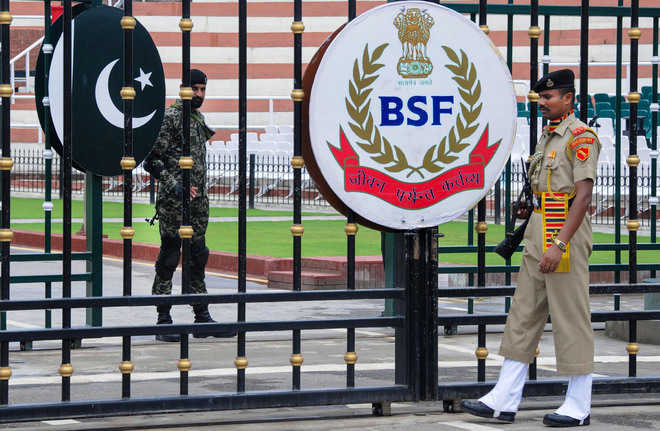
PK Jaiswar
Tribune News Service
Amritsar, October 15
The Border Security Force personnel on Wednesday gunned down a Pakistani intruder who tried to cross over to this side of the border through Samjhauta Express rail track near Attari.
A senior BSF official said the troops spotted a man walking towards the zero line fence through the rail track at Attari. When challenged he did not stop, forcing the BSF personnel to open fire.
The body was lying on the Indian side of the international border but beyond the barbed fence. BSF officials said as the Pakistan Rangers came near the track on the zero line, they had to stop the firing. “A flag meeting was called immediately to discuss the issue,” the BSF official added.
The BSF authorities said the intruder was identified as Gul Faraz (19), son of Muhammad Saeed, from the identity card issued by Pakistan Islamic Republic of Pakistan found on his person. The police also recovered a SIM card. Pakistan Rangers refused to claim the body.
BSF officials said they have taken the body in their possession and would hand over a report to Pak Rangers in this connection.
Srinagar, October 12
In a major step in easing the 69 days lockdown in the Kashmir Valley, the Jammu and Kashmir administration on Saturday announced restoration of all postpaid mobile phone services from Monday noon.
Government spokesman and senior IAS officer Rohit Kansal told reporters that all postpaid mobile phones will be resorted from October 14 noon.
The services were likely to be resumed on Saturday but a last minute technical hitch led to deferring of the resumption of services.
The subscribers will have to, however, wait for some more time for Internet services to resume in the Valley, they said.
The state administration has been examining various options with regard to suspension of mobile phone services which have come in for severe criticism for causing hardships to some seven million residents of the Valley.
At one point it was planned to open only BSNL services followed by allowing activating only incoming calls run by private telecom operators.
The move comes barely days after the Centre issued an advisory opening the Valley for tourists. Travel association bodies had approached the administration, saying that no tourist would like to come to the valley where no mobile phones working.
The mobile services in Jammu and Kashmir were shut down on August 5 after the Centre announced in New Delhi the abrogation of the special status guaranteed to the state under Article 370 of the Constitution.
Partial fixed line telephony was resumed in the valley on August 17, and by September 4 all landlines, numbering nearly 50,000, were declared operational.
In Jammu, the communication system was restored within days of the blockade and even mobile Internet was started around mid-August. However, after its misuse, the Internet facility on cellular phones was snapped on August 18. PTI
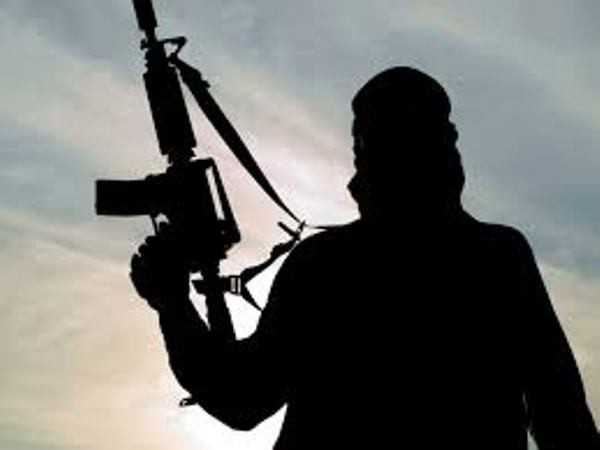
Bhaderwah/Jammu, October 11
Nearly 500 terrorists are waiting in various training camps along the Line of Control in Pak-occupied Kashmir, looking for opportunities to sneak into Jammu and Kashmir, a top Army officer said on Friday.
He also said 200 to 300 terrorists are operating in hinterland of J&K to keep the region in turmoil with Pakistan’s support.
“As far as militants operating within Jammu and Kashmir are concerned, 200 to 300 terrorists, who have come here, joined militants here,” Northern Command chief Lt Gen Ranbir Singh told reporters here.
Singh said this it in reply to questions about the number of militants operating in J&K and those in PoK ready to infiltrate into the country.
“Like this, nearly 500 terrorists are staged in terrorists’ training camps in PoK and are ready to infiltrate into J&K,” said Lt Gen Singh.
He said these figures keep changing as per their training schedule.
“Whatever be the number, we are capable to stop and eliminate them to ensure peace and normalcy in this region,” he added.
The Army commander said it is always their endeavour to ensure peace and normalcy in J&K.
“But Pakistan keeps trying to do some mischief to disturb the peace here. Even today terror infrastructure is being run within Pakistan (by its forces and agencies). These include training as launching pad for terrorists to infiltrate into the country,” he added.
He said Pakistan continues to keep terrorists armed to their teeth and provide all types of support to them.
He said deploying drones to arm terrorists is one of the new modus operandi of Pakistan, said Lt General Singh in reply to a question over the issue of dropping arms through drones in Punjab by Pakistan.
“But I want to ensure you that Indian Army is capable and determined to foil Pakistan’s any unholy design. Their designs will not be allowed to succeed,” he said. —PTI
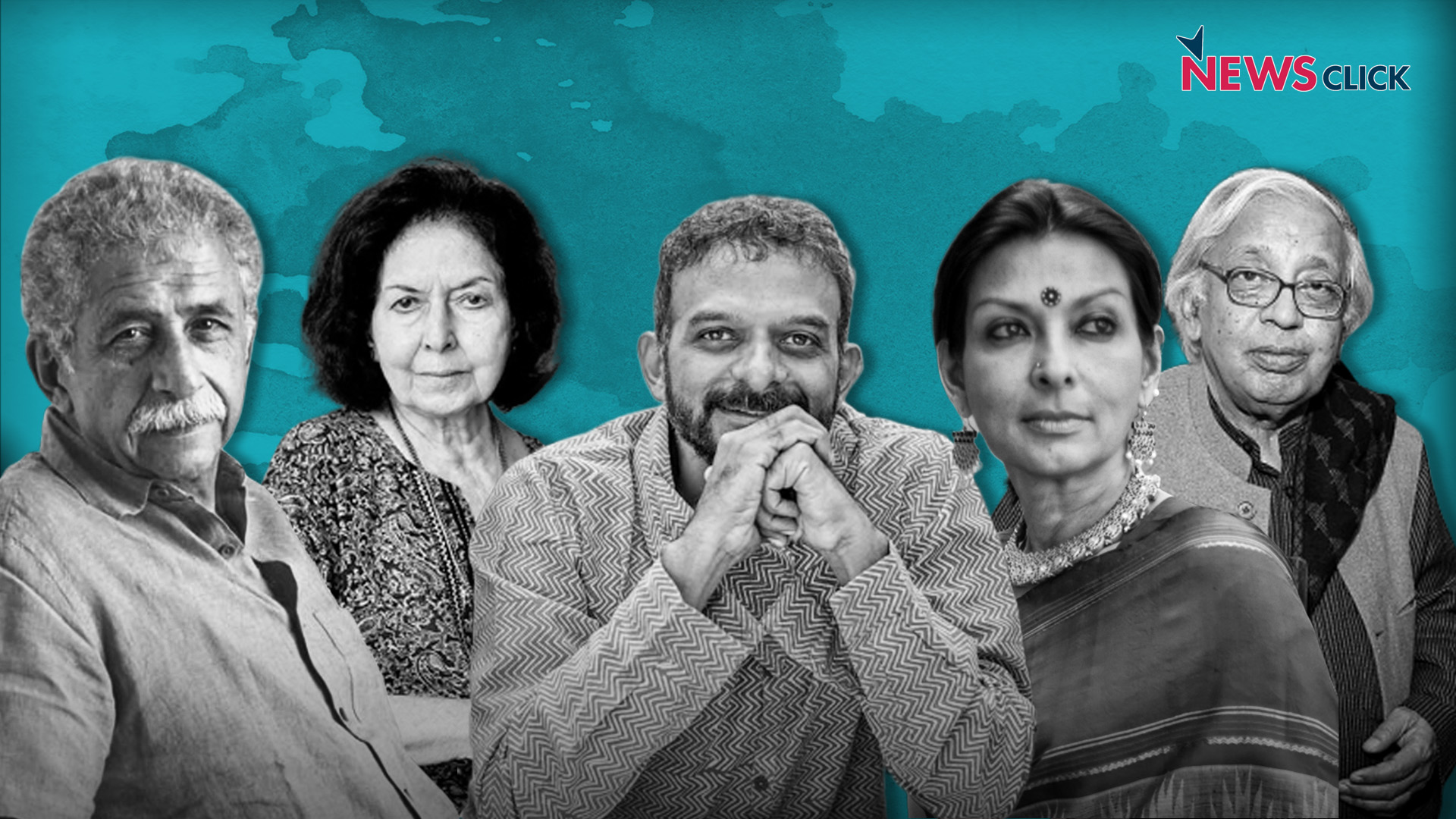
New Delhi: As many as 185 members of Cultural Community, including actor Naseeruddin Shah, dancer Mallika Sarabhai, authors Ashok Vajpeyi, Nayantara Sahgal and Shashi Deshpande, historian Romila Thapar, singer T.M. Krishna, and artist Vivan Sundaram, have endorsed an open letter to Prime Minister Narendra Modi by 49 eminent citizens against mob lynching, and have condemned the FIR against them in Muzaffarpur in Bihar, alleging “sedition” among other charges.
Read the full statement below:
An FIR has been lodged against forty-nine of our colleagues in the cultural community, simply because they performed their duty as respected members of civil society. They wrote an open letter to the Prime Minister, expressing concern about mob lynching in our country.
Can this be called an act of sedition? Or is harassment by misusing the courts a ploy to silence citizens’ voices?
All of us, as members of the Indian cultural community, as citizens of conscience, condemn such harassment. We do more: we endorse every word of the letter our colleagues wrote to the Prime Minister. This is why we share their letter here once again, and appeal to the cultural, academic and legal communities to do the same. This is why more of us will speak every day. Against mob lynching. Against the silencing of people’s voices. Against the misuse of courts to harass citizens.
| A Mangai | Ira Bhaskar | Rajan Gurukkal |
|---|---|---|
| Aarti Sethi | J Devika | Rajashri Dasgupta |
| Abha Dev Habib | Javed Malick | Rajendra Chenni |
| Abhishek Kaicker | Jawari Mal Parakh | Rajendra Sharma |
| Abhishek Majumdar | Jeet Thayil | Rajesh Joshi |
| Achin Vanaik | Jerry Pinto | Ranbir Kaleka |
| Achyutanand Mishra | Jyothi A | Ranjit Hoskote |
| Ajitha GS | Jyoti Punwani | Ravikant |
| Akeel Bilgrami | K Satchidanandan | Rekha Awasthi |
| Amit Bhaduri | K Srilata | Renu Ramanath |
| Ammu Joseph | Karthik Venkatesh | Ritu Menon |
| Amrita Pande | Kavery Nambisan | Romila Thapar |
| Anand Pradhan | KG Sankara Pillai | Ruchi Chaturvedi |
| Anand Teltumbde | KP Fabian | Rukmini Bhaya Nair |
| Ananya Parikh | KP Jayasankar | S Raghunandana |
| Ania Loomba | KP Ramanunni | Saba Dewan |
| Anil Janvijay | Krishnan Unni P | Saba Hasan |
| Anitha Thampi | KS Parthasarathy | Sabeena Gadihoke |
| Anjali Monteiro | Kunal Sen | Saleem Peeradina |
| Arun Dev | Leela Jacinto | Salil Chaturvedi |
| Arundhati Dhuru | MA Baby | Salim Yusufji |
| Arundhati Ghosh | Madhu Bhaduri | Sandeep Pandey |
| Arunima Sehgal | Madhusree Dutta | Sandhya Taksale |
| Ashok Bhaumik | Mallika Sarabhai | Sanjeev Kumar |
| Ashok Vajpeyi | Mangad Rathnakaran | Saumya Chakrabarti |
| Ashutosh Kumar | Mangalesh Dabral | Savithri Rajeevan |
| Atamjit Singh | Manishi Jani | SG Vasudev |
| Ayesha Kidwai | Maria Couto | Shafey Kidwai |
| B Rajeevan | Maya Rao | Shamsul Islam |
| Badri Raina | Merlin Moli | Shamya Dasgupta |
| Bajrang Bihari | MMP Singh | Shantanu Ray Chaudhuri |
| Bali singh | Moinak Biswas | Shashi Deshpande |
| Balvant Kaur | Moloyashree Hashmi | Sherna Dastur |
| Bharat Tiwari | Moolchandra Gautam | Shoma A Chatterjji |
| Bhasha Singh | MP Pratheesh | Siddharth |
| Bodhisatv | Mridula Garg | Sonia Jabbar |
| BRP Bhaskar | Mridula Koshy | Sreyashi Dastidar |
| Chaman Lal | MV Narayanan | Subhasini Ali |
| Chanchal Chauhan | Naina Dayal | Subhasis Bandyopadhyay |
| Chandrakant Patil | Nancy Adajania | Subodh Varma |
| Civic Chandran | Nandita Narain | Sudeshna Sengupta |
| CK Meena | Naseeruddin Shah | Sudhanva Deshpande |
| Damodar Mauzo | Natasha Badhwar | Sudhir Chandra |
| Devaki Khanna | Nayantara Sahgal | Sumangala Damodaran |
| Devendra Choube | Neelan Premji | Sunil P Elayidom |
| Dilip Borkar | Neelima Sharma | Svati Joshi |
| EV Ramakrishnan | Neeraj Malik | Syantani Chatterjee |
| Faisal Khan | Nilanjan Mukhopadhyay | Syeda Hameed |
| Gauhar Raza | Nilanjana Bhowmick | TM Krishna |
| Gayatri Spivak | NP Chekkutty | Udaya Kumar |
| Geeta Kapur | NS Madhavan | Vaasanthi Sundaram |
| Geetanjali Shree | Nupur Asher | Valay Singh |
| Girdhar Rathi | Pamela Philipose | Venkitesh Ramakrishnan |
| Gita Jayaraj | PK Parakkadavu | Vibha Maurya |
| Githa Hariharan | PK Pokker | Vijay Prashad |
| Gyan Prakash | PN Gopikrishnan | Vijaya Venkataraman |
| Hansda Sowvendra Shekhar | Poile Sengupta | Vishnu Nagar |
| Harsh Mander | Prabir Purkayastha | Vivan Sundaram |
| Hemlata Mahishwar | Pradeep Chakraverti | Vivek Narayanan |
| Himanjali Sankar | Pramod Ranjan | Yousuf Saeed |
| Hiralal Rajasthani | Purushottam Agrawal | Zoya Hasan |
| Ina Puri | Rahman Abbas |
Text of open letter written to Prime Minister Modi on 23 July 2019 by 49 eminent citizens, including Aparna Sen, Adoor Gopalakrishnan, Shyam Benegal, Anurag Kashyap, Ashis Nandy and Ramachandra Guha:
We, as peace loving and proud Indians, are deeply concerned about a number of tragic events that have been happening in recent times in our beloved country.
Our Constitution describes India as a secular socialist democratic republic where citizens of all religions, ethnicities, gender and castes are equal. Hence, to ensure that every citizen enjoys the rights given to her/him by the Constitution, our submission is:
1. The lynching of Muslims, Dalits and other minorities must be stopped immediately. We were shocked to learn from the NCRB (National Crime Records Bureau) reports that there have been no less than 840 instances of atrocities against Dalits in the year 2016, and a definite decline in the percentage of convictions.
Further, 254 religious identity-based hate crimes were reported between January 1, 2009, and October 29, 2018, where at least 91 persons were killed and 579 were injured (FactChecker.in database, October 30, 2018). The Citizen’s Religious Hate-Crime Watch recorded that Muslims, (14% of India’s population) were the victims in 62% for cases, and Christians (2% of the population), in 14% cases. About 90% of these attacks were reported after May 2014, when your Government assumed power nationally.
You have criticized such lynchings in Parliament Mr. Prime Minister, but that is not enough! What action has actually been taken against the perpetrators? We strongly feel that such offences should be declared non-bailable, and that exemplary punishment should be meted out swiftly and surely. If life imprisonment without parole can be the sentence in cases of murder, why not for lynchings, which are even more heinous? No citizen should have to live in fear in his/her own country!
Regrettably “Jai Sri Ram” has become a provocative ‘war-cry’ today that leads to law and order problems, and many lynchings take place in its name. It is shocking to see so much violence perpetrated in the name of religion! These are not the Middle Ages! The name of Ram is sacred to many in the majority community of India. As the highest Executive of this country, you must put a stop to the name of Ram being defiled in this manner.
2. There is no democracy without dissent. People should not be branded ‘anti-national’ or ‘urban Naxal’ and incarcerated because of dissent against the Government. Article 19 of the Constitution of India protects freedom of speech and expression of which dissent is an integral part.
Criticising the ruling party does not imply criticising the nation. No ruling party is synonymous with the country where it is in power. It is only one of the political parties of that country. Hence anti-government stands cannot be equated with anti-national sentiments. An open environment where dissent is not crushed, only makes for a stronger nation.
We hope our suggestions will be taken in the spirit that they are meant – as Indians genuinely concerned with, and anxious about, the fate of our nation.
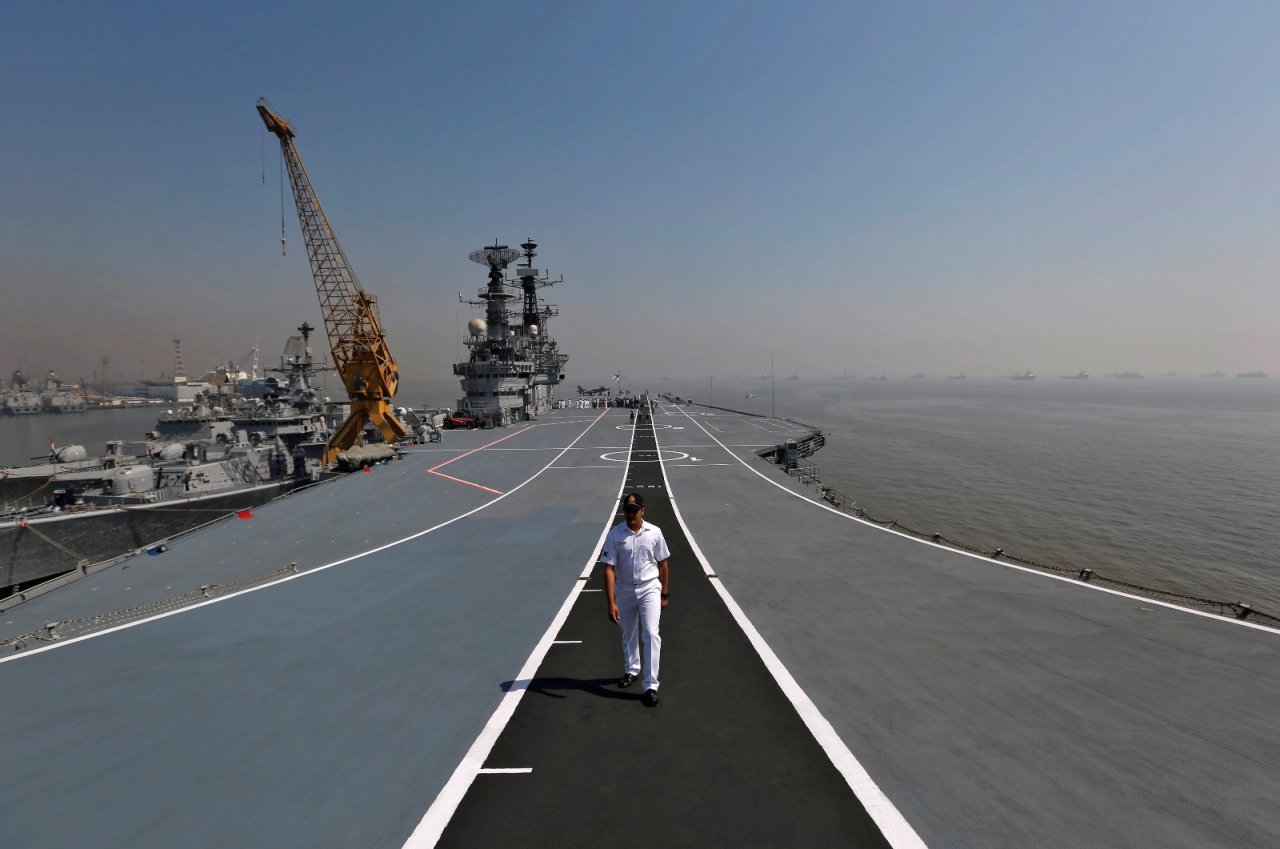
Key point: Accidents happen to all militaries seeking to operate new equipment
India’s only aircraft carrier suffered a fire that left one sailor dead.
And China, which is India’s rival, says this is because Indians aren’t competent enough to operate advanced military equipment.
The fire broke out in the engine room of the carrier Vikramaditya as it entered the Indian naval base at Karwar on April 26.
The blaze was extinguished, but not before an Indian Navy lieutenant commander, who led the firefighting effort, was overcome by fumes and later died in hospital, according to Indian media. He had gotten married just a month earlier.
What Happened Today In History?
The Indian Navy reported that the fire had not seriously damaged the combat capabilities of the vessel, which is India’s only operational carrier. The 45,000-ton Vikramaditya – the ex-Soviet carrier Admiral Gorshkov — had just completed a deployment in the Arabian Sea, and was preparing to begin joint exercises with the French Navy’s only aircraft carrier, the Charles de Gaulle, off the Indian coast.
The cause of the fire has not yet been disclosed. But Chinese media quickly ran a story that suggested the fire was the result of Indian incompetence. Li Jie, a Chinese naval expert, told the state-owned Global Times newspaper “that the fire was more likely to be out of human error rather than mechanical problems. The fire and the extinguishing process suggested that they are unprofessional and unprepared to address such an emergency, he said.”
“India has been actively developing its military in recent years, but ‘its military culture is lax and it has loose regulations,’ which cannot effectively train soldiers to operate advanced military equipment, Li said.”
That criticism comes despite that fact that India has far more experience than China in operating aircraft carriers. India’s first carrier, the Vikrant, a former World War II British carrier, was commissioned in 1961. It performed combat duty in the 1971 India-Pakistan War. China’s first carrier, the Liaoning – the ex-Soviet carrier Varyag – wasn’t commissioned until 2012. It has yet to see action.
China’s first indigenous-produced carrier, a Type 001A vessel, is scheduled to be launched in late 2019. Beijing appears to have far grander ambitions than India, with reports indicating that the People’s Liberation Army Navy may get as many as six new carriers by 2035.
In fact, during the Cold War, it was China that relied on huge armies of infantry armed with old Soviet-designed weapons. India was able to use mechanized forces to win wars against Pakistan in 1965 and 1971. Shocked by the lethality of American smart weapons during the 1991 Persian Gulf War, China has since embraced high-tech warfare, from stealth fighters to hypersonic missiles, with all the zeal of a convert.
The Indian military certainly deserves its share of criticism. It has suffered numerous accidents over the past decade, including a corvette that sank after a collision with a merchant vessel in 2006. Development of new weapons, such as the Arjun tank and the Tejas fighter, has become notorious for delays, cost overruns and technical problems.
But it’s not as if America and Russia haven’t had plenty of naval disasters (the USS Fitzgerald and the submarine Kursk, anyone?), or spent billions on failed weapons. Accidents happen when warships go to sea. Sometimes for the dumbest of reasons, but they happen.
China and India are rivals. And underestimating your enemy is always a mistake.
Michael Peck is a contributing writer for the National Interest. He can be found on Twitter and Facebook. This first appeared in May 2019.

Soldier Chandu Chavan, who inadvertently crossed into Pakistan in 2016, has said he is quitting the Army due to incessant “harassment” in the force.
“Since I came back from Pakistan, I have been continuously harassed in the Army and am being looked at with suspicion, that is why I decided to quit,” he said.
Chavan has sent his resignation letter to his unit commander in Ahmednagar, sources close to him have said.
Chouhan was captured by Pakistan Rangers and for four months, was beaten, tortured and almost killed before being handed over to India.
Last month, he met with an accident and remained admitted in a hospital with deep injuries to his face and skull. Chavan’s four teeth broke and he also sustained abrasion below his eyebrow and left chin, as well as his upper lip.
The accident occurred when he was riding his two-wheeler without a helmet which bumped a pothole near his home town Bohrivir in Dhule district of Maharashtra. — PTI
The panic was gripped across Rajasthan’s Jaisalmer district after loud explosions were heard as the Indian Army destroyed its old ordnance last evening.The Indian Army stated, “Old ordnance was being destroyed between 6.30 pm and 7.15 pm at Pokhran area of Thar desert, IANS reported.
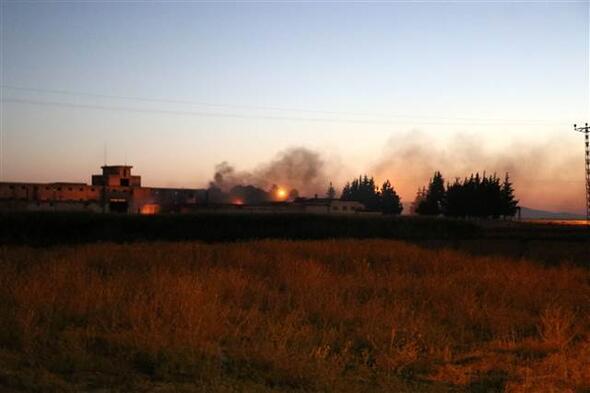
People in the vicinity came out of their homes in panic as the window panes rattled due to the impact of the five or more blasts.
























































